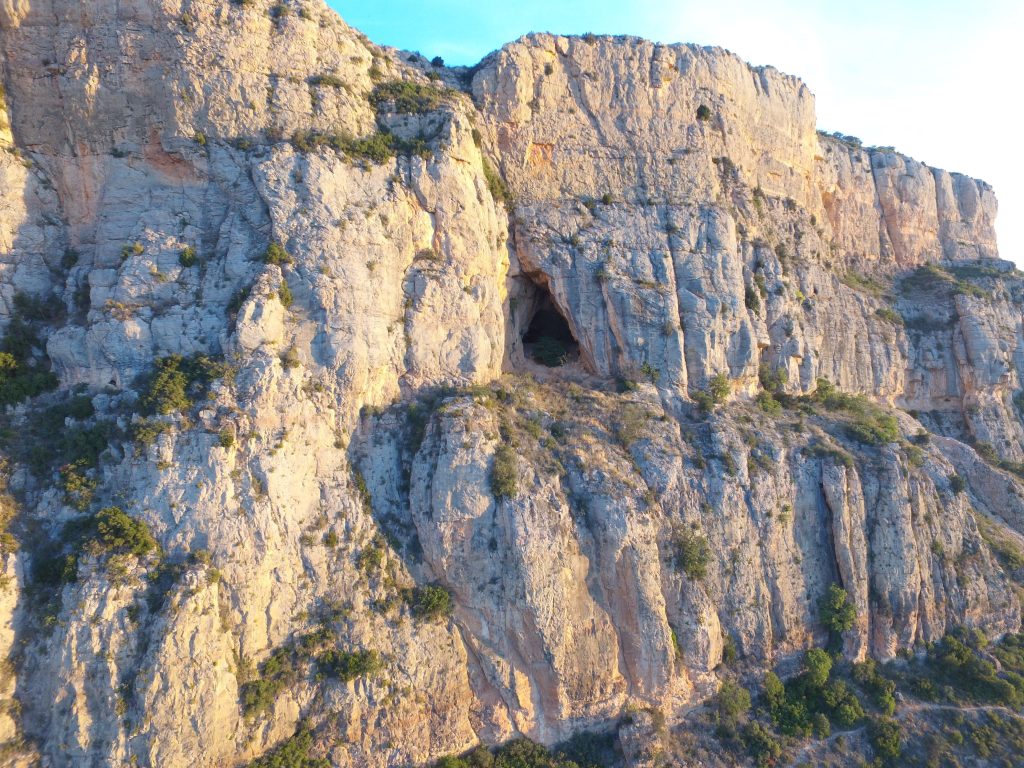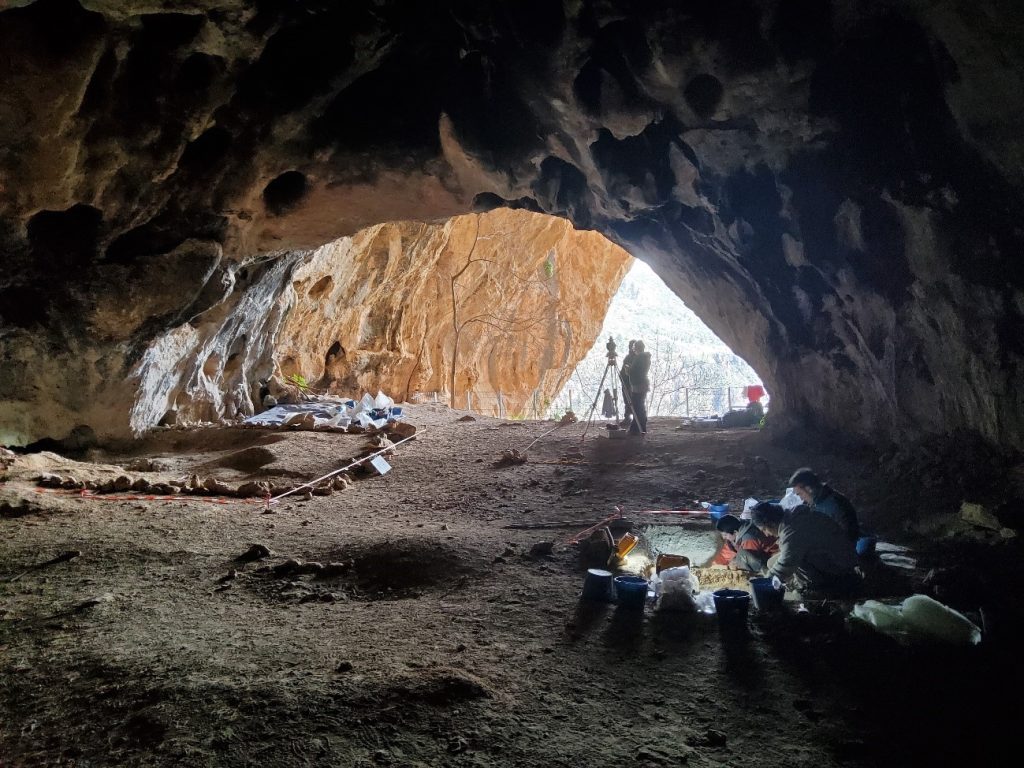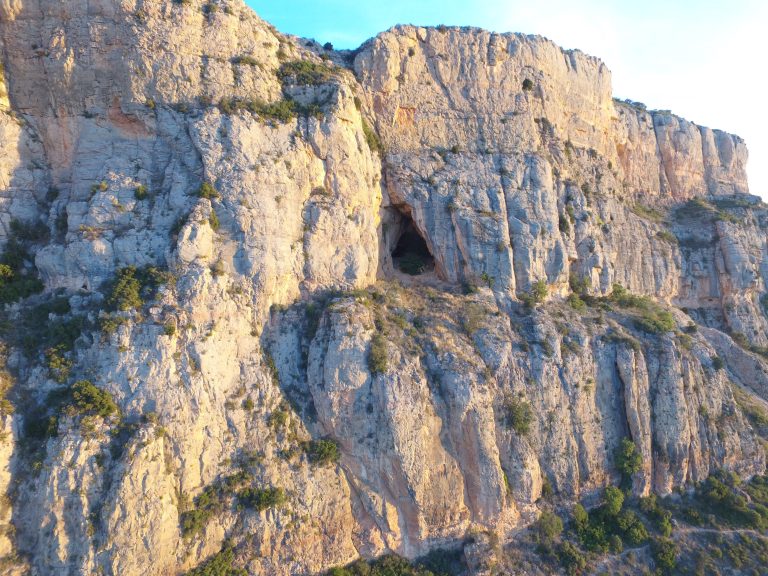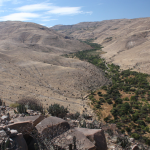A Pleistocene waterfall in the Cova del Tabac
The CENIEH is reconstructing an ancient waterfall in this cave in the Lleida Pre-Pyrenees, over 200 m high, in collaboration with archaeologists from the Universitat Autònoma de Barcelona

The archaeological excavation campaign has just concluded at the Cova del Tabac, an impressive cave in the canyon the Segre River has carved in the Pre-Pyrenees next to the locality of Camarasa (Lleida, Spain), where Alfonso Benito Calvo, a geologist at the Centro Nacional de Investigación sobre la Evolución Humana (CENIEH), is reconstructing a Pleistocene waterfall with the help of different laboratories at the same Center, and in collaboration with archaeologists at the Universitat Autònoma de Barcelona.
Studying the Cova del Tabac, a very ancient cavity housing millennial stalagmites and a thick sequence of fossil-bearing sediments, is enabling reconstruction of the region’s fauna during the Pleistocene, as well as offering geological indications of a spectacular landscape that was not suspected in this area.
“The initial results obtained from the cave sediments suggest the presence of a spectacular waterfall, which would have emerged from the cavity and leaped more than 200 m into the Segre River canyon bottom”, according to Benito Calvo.

Multidisciplinary analysis
Efforts to confirm these results through multidisciplinary analysis are under way at the following CENIEH laboratories: Digital Mapping and 3D Analysis; Electron Spin Resonance Dating; Geology; Archaeometry; and Microscopy. These analyses provided by the CENIEH are being combined with the data gathered in the excavation and the archaeological study directed by the Centre d’Estudis del Patrimoni Arqueològic (CEPArq, at the Universitat Autònoma de Barcelona).
All the work performed at the Cova del Tabac, a Cultural Asset of National Interest and Archaeological Zone of Spanish Historical Heritage, and declared a UNESCO World Heritage Site in 1998 because of its rock art, forms part of the project promoted by the Ayuntamiento de Camarasa, with the collaboration of the Departamento de Cultura of the Generalitat de Catalunya.
Press release from CENIEH



